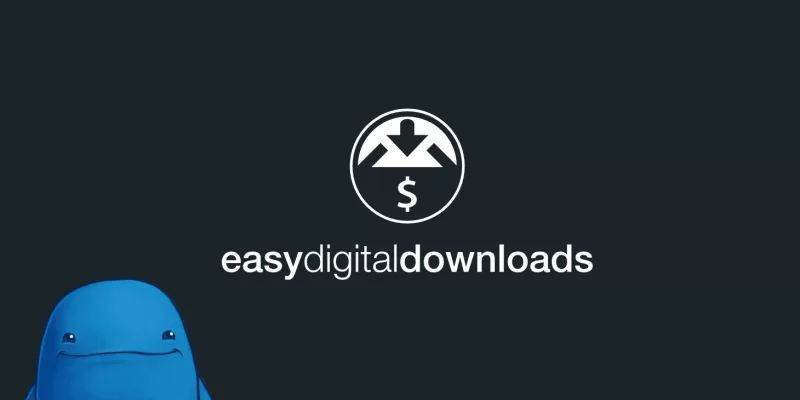Talking about visual data reports, webmasters, doctors, engineers, marketers, sociologists, researchers of every kind, and the like, they all have one thing in common. Perse, in regard to phaseware, they all make use of tools like Hotjar and features such as heat maps to make their analytical performance data sets comprehensible and actionable.
And now, when it comes to gaining better insight and intelligence related to your B2B business processes, visual data reporting has gained a solid footing. It provides a more efficient and effective alternative to traditional means such as PowerPoint or an Excel Spreadsheet. Of course, these traditional methods still have some merit while they are in use, yes.
But, there are certain elements that miss in them, thus the need to look for alternatives. For such and other reasons, this is where visual reporting tools come in handy. After all, they have become more recognized and utilized for their added convenience and in-depth insight into customer behavior and in-house productivity. That said, let’s learn more ahead.
The Visual Data Reports Key Tools For Performance Analysis
To begin with, according to improvado, most of us are visual creatures by nature. Whereby, we respond much better to visual cues like shape, color, and form. Whereas, numbers and words are abstract notions that we have to acquire by learning. That’s why when it comes to data it’s much easier to identify patterns and trends through charts and boards.
Perse, rather than reading tables full of data. Visualization tools like Tableau, Google Data Studio, Microsoft Power BI, and the like can greatly help transform your data into stunning charts and reports that can be easily used across your organization. A data visualization tool consists of two main parts: the data source and the visualization.
The data source can be a file such as a .csv or Excel file, or a connection through a server. Data visualization tools usually support integrations with most major analytics tools. As soon as you have your data in the tool, you can start creating reports or dashboards. Basically, a report is a collection of charts and other elements, such as images and text.
Generally, there are a variety of types of visual data reports addon tools and analytics features that are available in most application platforms. They include tables, time series, bar charts, pie charts, geo maps, scatter plots, and others. After you create your report you can upload it to a server — so that it’s accessible online by your company team.
The Main Visual Data Reports Benefits For Business Marketers
In simple terms, product success metrics allow you to measure success and failure in order to build products faster, smarter and better. Be that as it may, it’s worth mentioning that our team of digital online web professionals as well as web tech experts taskforce can help integrate this into your software for B2B customer service, so you can unify all your tasks.
During reporting, we focus on event streams — how people move through your product and make it easy to analyze their behavior. This means, that if we unify the many puzzle pieces of customer behavior before and after the conversion in a single location, we can more easily enable the analysis to construct a clear view and insights into their customer journey.
Learn More: Why Visual Data Reports Are So Important (2021)
What’s more, we also use a variety of addon dashboards — a great way to access and share data — they can provide a supplement or an alternative to regular reports. And unlike a report, which is static and is provided at regular intervals — hourly, daily, weekly, quarterly — a marketing data visualization dashboard is always on and updated in real-time.
Think iPhone or PlayStation which are all the same successful products: off-the-chart user engagement, retention, and satisfaction — they disrupt the market to surpass every product success metric. Realistically, all unsuccessful products are so in their own way. In over 15 years of product management, we’ve seen hundreds of mediocre products.
And we ask some of these questions:
- Why wasn’t the product meeting its revenue goals?
- What improvements or features would help?
- Should we kill the product?
Of course, yes! The reality is that all of these questions are impossible to answer without metrics. For such and other questions, most product success metrics often provide measurable, objective insight into customer behavior and help product managers ask questions and find answers. Unfortunately, this’s not of a common say for many though.
For one thing, some marketers still have thinking that these tools are overrated and don’t provide an advantage over traditional methods. However, by getting a better understanding of the benefits of visual tools, you may find it’s something your customer service infrastructure needs. Towards running your business effectively and successfully.
1. Visualize the performance of your products
In reporting, visual data reports help you understand what’s happening with your product at a glance, without having to spend hours interpreting spreadsheets. Data visualization tools enable you to extract user insights in an instant, so you can make better business decisions and meet your strategic objectives in regard to what theproductmanager tables.
They say that only 5% of new products succeed. Luckily, the good news is that by using product success metrics, you can achieve quite useful data. So that, as a result, you can make a compelling business case for a product, identify product improvements, obtain investment, decide whether to kill a product or retain it and much more…
2. Gain better access to trends
Using visual data tools allows for a clearer understanding of consumer trends in the marketplace of a given industry. For executives and CEOs, this is a great chance to recognize and take advantage of new opportunities. This insight can also be shared with other departments such as marketing or sales so they can tailor their campaigns based on new data.
The great thing about visual systems is they allow for web-based accessibility without extensive installation and training. Multiple departments can access data simultaneously without much support from IT. This type of visualization allows for more freedom and convenience than traditional reporting methods.
3. Reduce the overall workload
The volume of data at the disposal of B2Bs can be overwhelming. Sending out batches of reports for each reporting cycle necessitates the work of an entire team or department. However, by integrating visual data reporting, a company can save money and reduce the overall workload. Visualization dashboard software allows you to work so seamlessly.
And, as such, it combines responsive visuals with real-time analytics, all with sharing capabilities. This streamlined reporting helps support management to optimize their staff’s workflow. It also makes delivering reports much easier, cutting down on communication between clients and reducing client frustration.
4. A better understanding of support productivity
A visual report system provides management with great insight into their support team’s productivity. It also uncovers strengths and weaknesses in specific employees and where there are operational bottlenecks. This can help management reward staff for high performance or alert them to a change that needs to be made in an employee’s role.
This all results in better operation productivity. It also helps increase a team’s morale. In addition, visual reporting can also expose underperforming agents so management can either reposition them or replace them with a new team member. All these changes make for a more productive and happier support staff.
5. Save time with easier access to data
Time is a critical resource for any business. Today, companies are looking for every possible way to save time by making their processes more efficient. This is one of the biggest advantages of visual reporting. Using an integrated dashboard, you can decide what data you see. You also see it in a way that’s easily understood.
More so, since you have control over the data sources and display features. This helps all departments across an organization save time and be more proactive about how they utilize data. To enumerate, visual data technology provides an easier way to provide information to clients and also helps a B2B’s in-house efficiency.
The Difference Between Vanity Metrics Vs Clarity Metrics
On one hand, vanity metrics are surface-level metrics. They’re often large measures that sound impressive to others. Thus, they are metrics that make you look good to others but do not help you understand your own performance in a way that informs future strategies. Examples might include the number of impressions an ad has achieved in a given campaign.
Or rather, the number of times an application has been downloaded. It sounds great if these numbers are high, but where is the business value? The value of an ad lies in how the people who have seen it respond, not how many people have seen it. Likewise, what’s important with an app is whether people are actually using it, not whether they downloaded it.
On the other hand, clarity metrics are operational metrics, like the number of minutes per day the product actually gets used or how long it takes for a user to get service. These are the most significant forms of operational metrics, like the number of minutes a day your product actually gets used or how long it took for a user to get service.
Perse, these are the hidden gears that drive growth — use them to solidify your competitive advantage. Confusing the two types of measurements can be a recipe for disaster. Clarity metrics speak directly to business value and enable predictions — they show how to move the business forward. Just focus on customer behavior to avoid vanity metrics.
As well as on the stream of events that make up the customer journey. Another key indicator of a master marketer is in visualizing data — while utilizing two more advanced forms of marketing analysis; funnel and cohort analysis.
Using Data Visualization Tools For Your Product Marketing Reports
“I love data”; “What data do you have?”; “I don’t care about your opinion, what is the data?”; “We make data-driven decisions”. Sound familiar? Your leadership team probably talks like this and coaches you to do the same. Data gives us facts, but data doesn’t make the decisions for you. When looking at product success metrics, you have the best option.
For instance, you’d want to focus on those that are relevant to your product, factoring in its place in the product life cycle. Then, use these metrics to do more research, inform and then support the best decisions for your product development strategy and your next business marketing plan. Think about why a specific metric makes sense — put aside your biases.
Related Resource: 12 Key Product Success Metrics (+Examples)
Then, consider what you want to convey to stakeholders. You’ll still have to make decisions, persuade your stakeholders, and execute. Remember, there is a smorgasbord of product success metrics out there, yes. But, not all of them will be right for your product, its place in the life cycle, or your stakeholders — meaning, that you need to be very careful.
Not forgetting, that irrelevant product success metrics can blur the picture and irritate your stakeholders. On that note, there are a few questions that you can ask yourself in order to guide you through the metrics selection process.
Consider the following:
- Where is my product in the life cycle?
- What type of metric best suits my product?
- Who are the stakeholders for these metrics?
Stakeholders want financial metrics — executives and product managers need to see beyond the financial picture — by analyzing a product/feature performance. Metrics that will help them analyze and strengthen user engagement. If they don’t use them, those revenue projections are going to ultimately point in a predictable direction: down!
Visual reporting tools help you uncover the story behind the data and make informed business decisions. And in today’s competitive business landscape, data is crucial to success. Having said that, out there, you’ll find some of the topmost best visual data reporting application platforms that you can utilize in your next strategic business plan as listed below.
Most can’t understand the details of analytics, but they do want data analysis evidence. Stories that incorporate data and analytics are more convincing than those based on anecdotes/personal experiences. Perhaps the most compelling stories will combine data and analytics, and a point of view or example that involves real people and organizations.
By all means, a great visual reporting tool can help you identify weak spots in your product and create a step-by-step plan to improve them. But, for it to be deemed perfect, it must ascertain various key features as we’ll list down below. Coupled with creative advisors that can create a personalized shortlist of software solutions with unbiased recommendations.
Specifically, in order to help you identify the solutions that best suit your business’s needs. Through any given software application integration or even solution services partnership you should be able to get free access to their bespoke software selection advice. While, in the same fashion, removing both time and hassle from the research process at large.
The key features of a great data visualization tool to watch out for:
- It can handle multiple sources: A good data visualization tool should extract information from multiple data sources, such as spreadsheets, web pages, or other software, and turn it into neat reports.
- Self-service analytics at an enterprise scale: A great tool should help reduce the added cost, complexity, and security risks of multiple solutions with an analytics platform that scales from individuals to the organization as a whole.
- Has easy-to-use reporting tools: It’s, equally important, that your team should be able to use the software’s reporting features with ease. Whilst, splitting and segmenting the data according to their needs.
- Smart tools for strong results: Find and share meaningful insights with hundreds of data visualizations, built-in AI capabilities, tight Excel integration, and pre-built and custom data connectors.
- Offers unified communication and seamless collaboration: The visual reporting software should allow your team members to examine the data, share information, and collaborate on reports.
- It helps protect your analytics data: Keep your data secure with industry-leading data security capabilities including sensitivity labeling, end-to-end encryption, and real-time access monitoring.
- A visualization tool for real-time dashboards: Most marketers at the master level of visualizing data are using a marketing data visualization tool. This allows them to create real-time dashboards.
In addition to that, it should only take a minute to submit your requirements and they will give you a quick call at no cost or commitment. Based on your needs you’ll receive customized software shortlists listing the best-fitting solutions from their team of software advisors (via phone or email). They can even connect you with your selected vendor choices.
Along with community-negotiated discounts. These tools should feature adaptable dashboards, so your staff can tailor them to each project. A dashboard is a collective data-driven portal into different parts of your business, department, teamwork, or individuality. They continuously measure performance (the most impactful with real-time data).
Whilst, using a tool like Improvado to pipe data into visualization tools. They should offer an exploratory lens to ask new questions/observe actions. The holy grail is to take instant action within the dashboards to impact future outcomes, or rather, as close to it as possible. A powerful dashboard brings data into the conversation and it tells a story with that data.
Steps To Build A Dashboard With A Visualization Tool
After you connect your data to the visualization tool, it’s time to start building your dashboards. The first thing you need to do is select a data source from the ones you’ve already linked via a connector, a file or a data pipeline. We’ll take Google Data Studio as an example on how to create a dashboard. You’ve probably outlined the charts you’d like, right?
Especially, based on the discussions you had with your marketing team. A good idea is to also sketch your dashboard on a piece of paper before actually creating it to get a feel of what it would look like. Start by selecting the chart you’d like, e.g. a timeline with your daily revenue. Probably, this is important for your team to monitor on a daily basis to track sales.
Get Started: Instantly Connect Marketing Data To Google Data Studio
Make sure to select the appropriate metrics and dimensions for the chart, in this case Date and Revenue. If you want more granularity you can add an extra dimension to break down the chart. Let’s say, by channel, to see how much revenue each marketing channel contributes to the overall result. Move on by adding more charts that provide useful information.
For example, you can added a bar chart that shows the Conversion Rate by Country. This would be useful for your team if they want to evaluate the individual performance of each country they operate in. If a country is too costly and has really low volume, you might want to reevaluate your strategy for that market.
Similarly, if a specific market has a very good conversion rate it probably pays off to scale your efforts there. It’s good to add clear, explanatory titles for each chart so that it’s easy to understand even for someone seeing the dashboard for the first time. Add some documentation to go a long way to help anyone in the company use this dashboard.
Summary Thoughts:
Before you analyze your data with a tool such as Microsoft Power BI, you’ll need to replicate data from all of your sources into a data warehouse. Using an ETL tool to replicate data into a cloud-based data warehouse, such as Microsoft’s Azure Synapse, makes it easy to combine data from all of your sources for a holistic view of your business.
What’s more, you can even simplify and streamline your data ingestion process by using a cloud-based ETL service like Stitch and the like — that automates the process of connecting to and extracting data from sources and loading the data into your destination. From there you can use Power BI to perform the in-depth analysis you need.
Uniquely, Stitch helps get your data to Power BI. Whilst, keeping in mind, that as our associate partner, their approach is quite very simple, straightforward, and ready to go right out of the box. Meaning, that you too can Try Stitch For Free and start getting data-driven insights from Microsoft Power BI tomorrow. And, you can always Contact Us if you’ll need help.
Other Related Resource References:
- What Is Big Data? How It Works Plus Why It Matters
- Data Management | Systems, Challenges & Best Practices
- Steps To Block Website Bots From Crawling Your Critical Data
- Diffbot | Data Graphs, Extraction, Web Scraping & Crawling
- Wayback Machine | The No #1 Data Internet Archive For Webpages
- 3 Tips to Make Your Data Reporting More Interesting and Impactful
- How To Use Data Visualization Tools For Your Marketing Reports
- Using Visual Data Discovery To Analyze Data And Create Reports
- 13 Powerful Ways To Visualize Your Data (With Examples)
- SpyFu | The #1 Web Tool For Unlimited SEO & PPC Data!
Finally, you are also welcome to share your additional thoughts, opinions, suggestions, recommendations, or even contribution questions (for FAQ Answers) in our comments section. Until the next one, thanks for your time!







